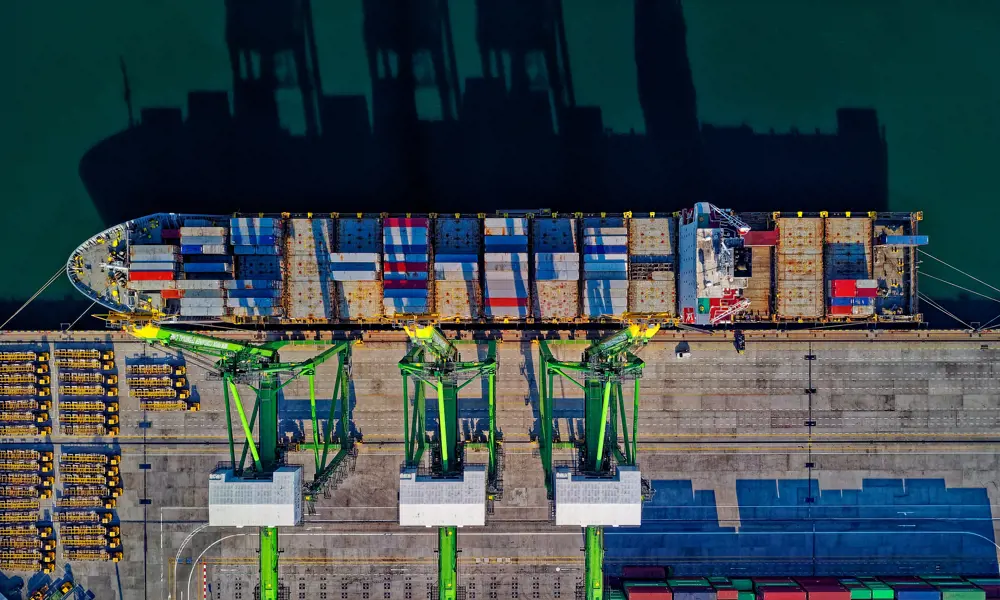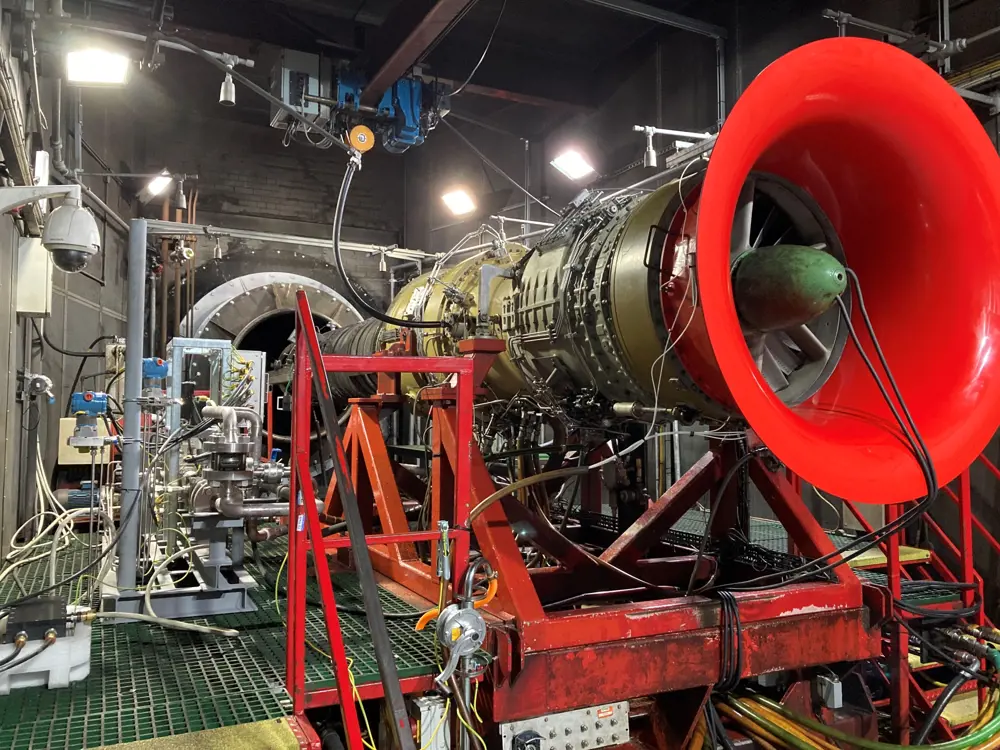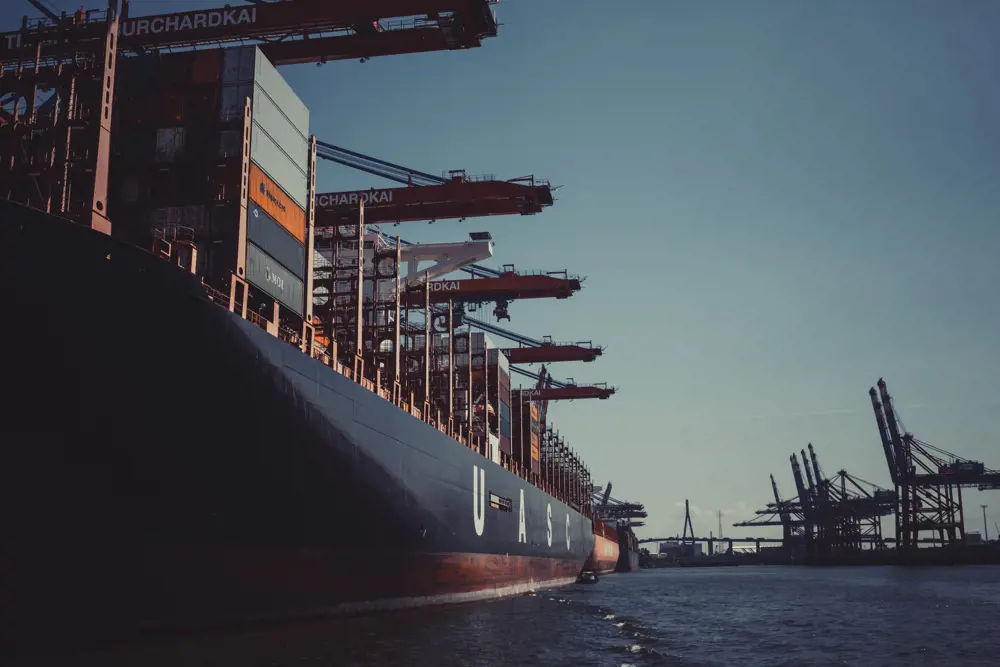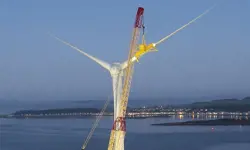
How green methanol can help us decarbonise

Siemens Energy's engine, retrofitted to run on green methanol, in February 2023 © Siemens Energy
The engineers, from Siemens Energy, showed for the first time that green methanol produced from sustainable sources could power a gas turbine engine. The gas turbine used in this liquid biomethanol pilot is based on an original frame design first introduced in 1950. This promising milestone proved that gas turbines can be easily retrofitted to run on green methanol. According to the team responsible, shifting from conventional fuels to green methanol in a gas turbine can reduce CO2 emissions by up to 75%.
What’s green methanol?
Ever cooked your holiday dinner on a camping stove? Or de-iced your car windows? Are your gym clothes made from synthetic fabrics? If the answer to any of these is yes, you are very likely to have come across a methanol derivate. Methanol is a versatile alcohol used in the production of many everyday items such as paints, solvents, plastics, car parts, and clothing. It is also used as an automotive fuel.
Similarly to hydrogen, colours are used to designate how methanol is produced. Regardless of the source, the resulting methanol has the same chemical structure.
- Brown methanol originates from coal.
- Grey methanol is made from natural gas.
- Blue methanol is made from blue hydrogen, which is produced from natural gas. The difference here is that carbon capture technology is used at the hydrogen production stage, as well as when the blue hydrogen is converted to methanol.
Then, there’s low-carbon green methanol, for which there are two types:
- Bio-methanol, produced from biomass or biogas from food waste.
- E-methanol, produced from renewable energy, water and captured CO2.
Largely due to the current cost of production, the methanol generated today mainly comes from fossil fuels: 65% of the methanol available today is grey methanol, 35% brown methanol and just 0.2% green methanol. However, this is likely to change in the future as renewable power continues to decline in cost.
In order to advance towards a net zero future, we must reduce CO2 emissions globally. So, it is hoped that green methanol will replace grey and brown methanol in its many current manufacturing uses, as well as in emerging applications.

Shipping is one of the most difficult to decarbonise sectors. Could green methanol offer a solution in future? © Sascha Hormer / Pexels
The insiders’ account
Ever wondered what being an engineer is really like? Robert and Tyler, two of the key performance engineers that worked on the world’s first liquid biomethanol pilot shared their experiences from this project from the inside and what they took from it for this article.
1. What was your role in the project?
Tyler: I was a senior performance engineer for the project. This meant I was responsible for conducting the test and collecting and analyzing the data.
Robert: Performance engineer, supporting in the feasibility assessment of the project, calculating values required for determining the specification of the system, processing the data during and after test and comparing to our predictions.
2. What does being an engineer mean to you?
Tyler: For me, being an engineer is solving the world’s problems, such as climate change, through innovation. This project was a prime example of this!
Robert: As an engineer, my main aim is to solve problems or at least help people along the way to the solution, whether that be with an existing piece of equipment or when going from a theoretical idea to a practical product.
3. What did taking part in this project mean to you?
Robert: Taking care of the environment means a lot to me, so having the chance to help move the business towards our decarbonisation goal was very rewarding. Though renewables are the future, they are not quite ready yet, and the work we are doing here is to ensure we have enough time get them ready.
4. What was your favourite part of the project?
Tyler: To see the gas turbine running on bio-methanol for the first time. The sense of achievement in the team was fantastic to see two years of hard work come to life. It was also being part of gas turbine history, knowing that we had just achieved something that had never been done before.
Robert: Seeing all the hard work finally coming to fruition when we ran on bio-methanol for the first time and seeing that we had exceeded our expectations.
5. What was the biggest challenge?
Tyler: I had to really deepen my engineering knowledge. It was a challenge, but I learnt so much from this project that will benefit me for the rest of my career.
Robert: The biggest challenge was probably the logistics of getting everything built, installed, and setup for the test, the actual test itself was relatively straightforward!
6. How did this project help you learn or develop your engineering skills?
Tyler: As a young developing engineer, this project was one of the biggest and most technical projects I had worked in. It was also something that had never been done before. It meant putting engineering theory I had learned throughout studies to practice as well as learning new skills. Also working with a global team helped develop my interpersonal skills.
Robert: I learned a lot during my time in the project, primarily around alternative fuels such as bio-methanol, but also around running an engine on a test bed and other analytical techniques.
7. What was your main takeaway?
Tyler: That as engineers, we have the ability to actually make a difference and make something real!
Robert: My main takeaway is that methanol has the potential to be a real game-changer as a liquid fuel, especially green methanol.
One of these emerging applications is shipping. Methanol is one of few viable solutions to decarbonise shipping, which is currently responsible for 2% of global greenhouse gas emissions. It’s thought that existing ships can be retrofitted to run on green methanol at moderate costs, and for new builds the investment is comparable to building new traditional ships.
However, one of the key issues is ensuring there will be enough green methanol to go round. To this end, MAERSK recently announced a significant milestone – acquiring enough fuel for the maiden voyage of the first ever green methanol-powered container vessel.
In the meantime, further proof-of-concept studies are also needed to show e-fuels such as green methanol are a viable option. In one such example, Porsche and Siemens Energy have joined forces to manufacture e-fuels using renewable energy. In this ‘Haru Oni’ project in Chile, a 3.4 megawatt wind turbine powers the production of green methanol from carbon dioxide and water. It is then converted into synthetic fuels that will later be used to power combustion engines. Initially, the fuel will be carbon-neutral gasoline, but eventually, the facility will make e-methanol for shipping.
As more pilot schemes get underway, momentum for green methanol will continue to build. Then, companies will begin to scale up manufacturing and roll the fuel out more widely.
Contributors
Carmen Zaragoza Moreno is a chartered engineer with a masters in renewable energy and an MBA. Passionate about the energy transition, she works as strategy manager at a large energy company.
Carmen believes in engineering as a means to solve global challenges and a way to adapt to the new worldwide shifts shaping business and society. Carmen is a member of the QEPrize Ambassador Network Council, an active STEM ambassador and volunteers as a member of the Women’s Engineering Society Director’s Committee.
Keep up-to-date with Ingenia for free
SubscribeRelated content
Energy

Algae-powered architecture
An apartment block in Hamburg in Germany has been built that uses microalgae placed within its façade to generate heat and biomass. Jan Wurm, an associate director at Arup, was one of the chief designers of the energy system. He talked about the concept, execution and results from the world’s first photobioreactor.

Digital hydraulics for wind energy and beyond
Research that has helped change the technology for harnessing wind energy has many other applications. The digital hydraulics system devised by Artemis Intelligent Power has received many accolades, the latest being the winner of the 2015 MacRobert Award.

New energy pioneers
London-based BBOXX supplies solar-powered battery boxes to customers in developing countries. Their remote monitoring and battery management system was one of the winners of the 2015 Bloomberg New Energy Finance Award.

Energy with connections
When Steve Holliday FREng moved from the oil industry into energy distribution, the sector was seen as staid. In reality, during his years at National Grid, the sector became increasingly important as the need to tackle climate change led to a transformation in the UK’s energy mix.
Other content from Ingenia
Quick read

- Environment & sustainability
- Opinion
A young engineer’s perspective on the good, the bad and the ugly of COP27

- Environment & sustainability
- Issue 95
How do we pay for net zero technologies?
Quick read

- Transport
- Mechanical
- How I got here
Electrifying trains and STEMAZING outreach

- Civil & structural
- Environment & sustainability
- Issue 95